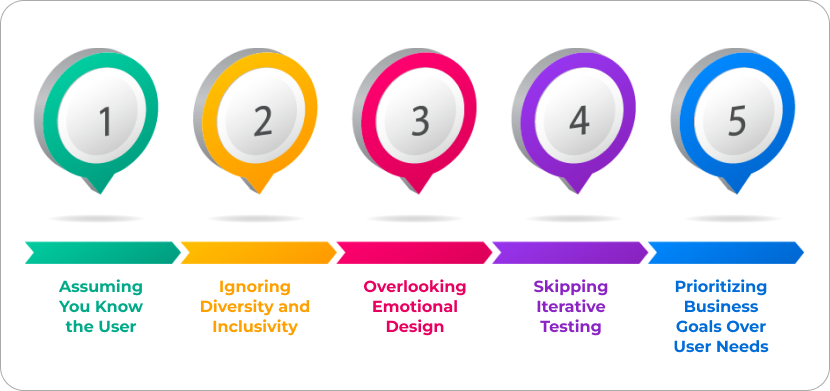Unlocking the Power of Human-Centered Design
- 24.05.2024
- 1 views
- 8 min
The user experience can make or break a product
In today's fast-paced digital landscape, the user experience can make or break a product. That's where human-centered design (HCD) comes into play. Unlike traditional design approaches that focus on aesthetics or technical specifications, HCD prioritizes the needs, behaviors, and emotions of the end user. By putting people at the heart of the design process, companies can create products and services that not only meet functional requirements but also resonate on a deeper, more personal level.
Understanding and implementing a human-centered design process can be transformative for your business. It helps ensure that your products are not just usable but truly engaging, fostering loyalty and satisfaction among your customers. In this article, we'll explore how the human-centered design process works and why it's essential for your business's success.
What is Design for Human Understanding
Human-centered design (HCD) is an approach to problem-solving that starts with understanding the people you're designing for and ends with solutions tailored to their needs. This methodology relies heavily on empathy and involves direct engagement with users throughout the entire design process. By doing so, designers can gain deeper insights into the user's experiences, pain points, and desires, leading to more effective and meaningful solutions.
At its core, HCD involves several key principles:
- Empathy: This is about seeing the world through the eyes of your users. By understanding their context, behaviors, and emotions, you can design solutions that genuinely meet their needs.
- Co-creation: Involving users in the design process not only validates your assumptions but also enriches the creative process with diverse perspectives and ideas.
- Iterative Process: HCD is not a one-time effort. It involves continuous prototyping, testing, and refining to ensure the final product is both functional and delightful.
- Interdisciplinary Collaboration: Effective HCD requires the collaboration of cross-functional teams, including designers, engineers, marketers, and end-users, to bring a holistic perspective to problem-solving.

By prioritizing human understanding, HCD shifts the focus from what a product can do to what it should do to enhance the user's life. This approach leads to products and services that are not only functional but also intuitive, accessible, and emotionally satisfying.
Features of Human-Centered Design
Human-centered design (HCD) is distinguished by several key features that ensure the end product is both effective and resonant with users. Here are the main features of HCD:
-
User Research and Insights: At the heart of HCD is a deep understanding of the users. This involves comprehensive research methods such as interviews, surveys, and observation to gather insights into users' needs, behaviors, and pain points. This foundational knowledge guides all subsequent design decisions.
-
Journey Mapping: Understanding the user’s journey from start to finish is crucial. Journey mapping involves detailing the steps users take to achieve a goal with the product, highlighting their experiences and identifying potential areas for improvement.
-
Prototyping and Testing: Prototyping is an essential feature of HCD. It involves creating early versions of a product to test and validate ideas with real users. This iterative process of building, testing, and refining ensures that the final product is well-tuned to user needs.
-
Accessibility and Inclusivity: HCD emphasizes designing for all users, including those with disabilities. Ensuring accessibility and inclusivity means creating products that are usable by people with a wide range of abilities, backgrounds, and contexts.
-
Emotional Design: Beyond functionality, HCD also considers the emotional impact of a product. This involves designing experiences that evoke positive emotions, leading to higher user satisfaction and engagement.
By incorporating these features, human-centered design creates products that are not only useful and functional but also meaningful and delightful to use. This user-centric approach ultimately leads to greater user satisfaction and loyalty, driving the success of the product in the market.
How Human-Centered Design Increases the Attractiveness of Your Website
Human-centered design (HCD) can significantly enhance the attractiveness of your website by creating an intuitive, engaging, and satisfying user experience. When a website is designed with the user in mind, it not only meets their functional needs but also delights them, leading to increased user retention and loyalty.

One of the primary ways HCD boosts website attractiveness is through improved usability. By conducting thorough user research and understanding the target audience's behaviors and preferences, designers can create a website layout that is easy to navigate. This reduces the cognitive load on users, allowing them to find the information they need quickly and effortlessly. A well-organized, user-friendly interface makes visitors more likely to stay longer and explore more content.
Moreover, HCD emphasizes the importance of accessibility and inclusivity, ensuring that the website can be used by people with varying abilities and backgrounds. By incorporating features such as readable fonts, intuitive navigation, and alternative text for images, the website becomes more welcoming to a broader audience. This inclusivity not only enhances the user experience but also broadens the potential user base.
Emotional design is another crucial aspect of HCD that contributes to a website's attractiveness. By creating an aesthetically pleasing design that evokes positive emotions, the website can establish a stronger connection with its users. Elements such as appealing visuals, engaging content, and interactive features can make the website more enjoyable to use, leaving a lasting positive impression on visitors.
What to Avoid for Human-Centered Design

While human-centered design (HCD) offers numerous benefits, there are also common pitfalls that designers should avoid to ensure the success of their projects. Here are some key aspects to consider:
-
Assuming You Know the User: One of the biggest mistakes in HCD is assuming you know your users without conducting thorough research. Designers should avoid relying solely on their assumptions or personal preferences and instead invest time in understanding the target audience through user research and feedback.
-
Ignoring Diversity and Inclusivity: Designers should be mindful of the diverse needs and backgrounds of users. Ignoring accessibility considerations or designing only for a narrow demographic can alienate potential users and limit the reach of the product.
-
Overlooking Emotional Design: While functionality is essential, neglecting the emotional aspect of design can result in a sterile or unappealing user experience. Designers should strive to create emotionally engaging interfaces that resonate with users on a deeper level.
-
Skipping Iterative Testing: Testing prototypes with real users is crucial for identifying usability issues and refining the design. Skipping or rushing through this iterative process can result in missed opportunities for improvement and ultimately lead to a subpar user experience.
-
Prioritizing Business Goals Over User Needs: While it's important to align design decisions with business objectives, prioritizing them over user needs can backfire. Designers should strike a balance between business goals and user-centered design principles to create products that are both commercially viable and user-friendly.

By avoiding these common pitfalls, designers can ensure that their human-centered design initiatives are successful and result in products that truly resonate with users.
Conclusions
In an increasingly competitive digital landscape, adopting a human-centered design (HCD) approach is more important than ever. By prioritizing the needs, behaviors, and emotions of users, HCD ensures that products and services are not only functional but also deeply engaging and satisfying. This methodology transforms the way businesses design their websites and other digital experiences, leading to higher user retention, loyalty, and overall success.
The features of HCD—such as user research, journey mapping, prototyping, accessibility, and emotional design—collectively contribute to creating products that resonate with users on a personal level. When applied to website design, these principles enhance usability, inclusivity, and emotional appeal, making the site more attractive and effective.








